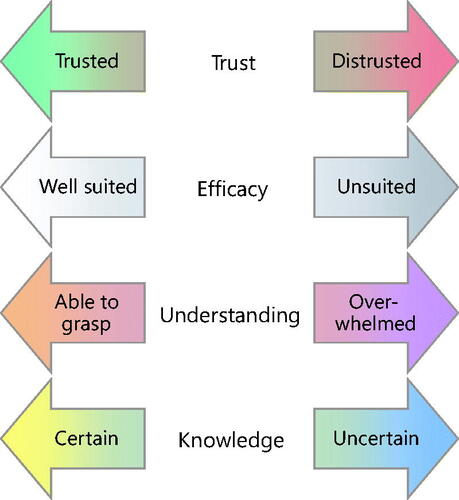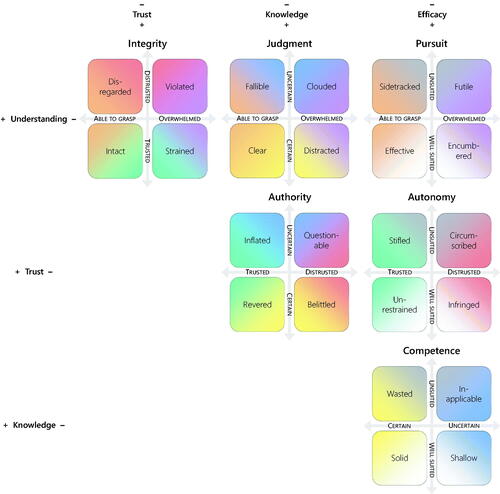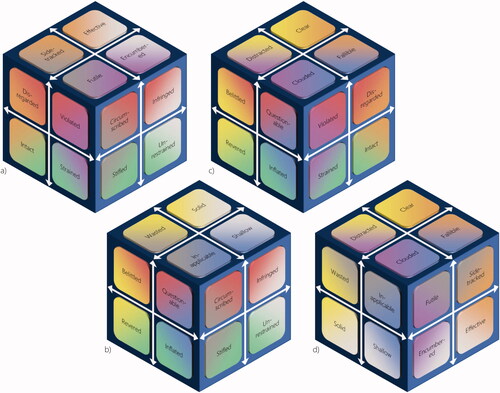Figures & data
Figure 1. The GP has four personal needs that are ‘principal’ in the sense of being mutually independent: trust (being listened to, given the benefit of the doubt, and receiving recognition for their work), efficacy (being well suited to the task and in a position to make a difference), understanding (being able to grasp the essential features of the problem, including the values at stake), and knowledge (having general medical knowledge and specific facts about the situation).

Figure 2. The four principal personal needs of the GP can be combined into two-dimensional projections, each of which corresponds to a ‘second-order’ need: integrity (maintaining certain boundaries against the outside world); judgment (making decisions informed by both facts and moral imperatives); pursuit (being able to effect valued change); authority (receiving recognition for one’s knowledge); autonomy (being free to set professional goals); and competence (being knowledgeable about those matters that one is well suited to handle). Because they share components (principal needs), second-order needs are highly interdependent.

Figure 3. The four possible third-order threats to the self can be understood as being a) deprofessionalised (violated integrity, futile pursuit, and circumscribed autonomy), b) deprived of identity (questionable authority, circumscribed autonomy, and inapplicable competence), c) exploited (violated integrity, clouded judgment, and questionable authority), and d) bogged down (clouded judgment, futile pursuit, and inapplicable competence). The fourth-order threat of being reduced into an assistant implies the simultaneous presence of all third-order threats.

